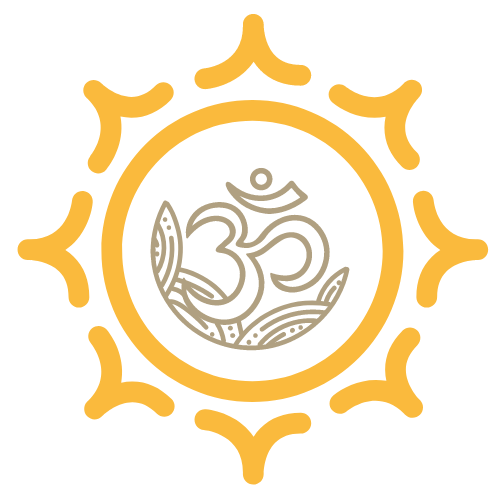The 5 Koshas for Parenthood
In yogic philosophy, the state of being at any point in time is considered to be the culmination of five sheaths or layers of our existence called the koshas. The transition into parenthood creates and necessitates transformation on all levels as we shift from self-responsibility to guardianship for other lives that depend upon us.
By understanding how this transition is affecting each layer of your being, you can understand how best to support yourself in your role as a parent.
Annamaya kosha – the physical body
It can feel like your physical needs get a bit of a battering as a parent, especially when your children are young.
You are constantly carrying around an increasingly heavy human who inadvertently does not want to stay still or sit in an ergonomic position against you.
You are constantly carrying a whole load of additional items that are needed to care for your tiny human/s.
You find yourself with far less time available for exercise, contemplation/reflection, relaxation and meal preparation.
You are awoken often or intermittently throughout the night and so a full, unbroken night’s sleep is a distant memory.
When you get sick, it’s usually because your child just picked up a virus, so there’s little chance to care for yourself as you’re up half the night caring for your sick child - and you can’t really get anyone
Phew, just writing that all down is exhausting!
So although society might tell you to ‘just push through’ and you might be tempted to stay up just that little bit later when the kids finally go to sleep at night, you know deep down that what would really support your physical health is more rest… But how to find it?
Exercise – Reclaiming Rest (Viparita Karani)
You can fast-track a feeling of having rested by resting in a position that invites blood to move back towards the heart where it is most needed.
1. Lie perpendicular near a wall with your tailbone facing the wall so your legs can rest up the wall, heels into the wall. If you have a few pillows or a bolster that you can place under your sacrum to raise your hips up, this will support the flow of blood back to the heart.
2. Start from your toes and gently begin to point and flex them, inviting blood from your extremities back down towards your pelvis.
3. Follow down your legs, engaging and relaxing each set of muscles a few times gently as you go: the calves, the muscles that support your knees, your thighs, your buttocks.
4. Now come to an awareness of your pelvis and your pelvic floor. Bring your hands onto your belly and notice the rise and fall of your abdomen. On the inhale, as your abdomen rises, your pelvic floor is naturally lowering/softening. On the exhale, as your abdomen falls, your pelvic floor is naturally lifting/contracting.
5. Now bring your awareness to your ribcage expanding on the inhale and softening on the exhale as energy is received back at the heart and redistributed from the heart throughout the body. Simply spend time here connecting with these movements and sensing into the sensation of energy being moved through your body with the breath.
Pranamaya kosha - life force energy, transported by the breath
With all the exhausting demands you are experiencing as a parent, it can feel as if the life force is slowly being drained from you. Yet your children are probably regularly asking you to play with them, which you are trying your best to oblige to amidst a never-ending daily load of household chores.
This constant pull on your energy in multiple directions can become overwhelming. When it is all seeming like too much, pranayama or exercises that generate and channel life force energy can be accessible ways to re-energise and reset, even if you only have a few minutes available to you.
Exercise – Bhramari Pranayama
1. Lie either on your back or on your side and allow the breath to steady to a natural pace.
2. Bring your hand/s to the side/s of your ribcage (one side if you are lying on your side, two sides if you are lying on your back). Notice if you feel any movement of the ribcage expanding outwards on the inhale and any movement back in on the exhale. Once you have observed for a few rounds of breath, invite the breath to move more into the sides of the ribcage with each inhale.
3. After a period of time, move your awareness to the movement of the ribcage at the back of your body. Notice if you feel any expansion outwards on the inhale and movement back in on the exhale. Once you have observed for a few rounds of breath, invite the breath to move more into the back of the ribcage with each inhale.
4. Bring it all together now. Place your hand/s on the front of your ribcage and notice the movement here in and out with the breath. Invite there to be less movement out in the front and direct more of the movement to the sides and back of the ribcage.
Spend as long as feels comfortable or suitable for your energy levels on this exercise. You can progress by bringing this awareness into other more upright postures such as sitting or standing.
Manomaya kosha – mind
They say that mothers/parents have an increased capacity to multi-task. And it’s true that multitasking is an unavoidable part of parenting. However, multitasking has the side-effect of dispersing and depleting our energy, as well as decreasing our capacity to concentrate.
So although you can’t avoid multitasking altogether, you do have the capacity to notice when you have been multi-tasking alot (whether by choice or necessity) or to notice when you find yourself feeling overwhelmed with thoughts and worries.
Once you become aware of this, you can choose to stop and take a moment to ease the mind gently back towards a calmer and more concentrated state. This can be achieved through simple grounding and anchoring practises such as mantra and mudra.
Exercise – Gyan Mudra
A mudra is a symbolic gesture made with the body, most often with the hands/fingers (mudra means seal). By holding the body in specific ways, energy is directed to flow within the subtle body, supporting the desired state of the practitioner. We will practice gyan mudra which helps to improve concentration and memory, whilst promoting a sense of calmness and grounding in the body.
1. Find a comfortable position to be, and gift yourself at least 5-10minutes of space and time.
2. Close your eyes and let your breath steady
3. Create gyan mudra with your hands, to help balance and calm the air element in your body:
a. Bring your hands to rest either on your thighs if sitting or at your sides if lying, with palms facing up.
b. Bend your index fingers so that the tip of them touches the tip of your thumbs.
c. Ensure you have enough pressure to feel the mudra but not too much that it is uncomfortable to hold.
4. Hold gyan mudra for as long as feels comfortable or you have time for, allowing yourself to come back to the sensation of holding the mudra and/or the steadiness of your breath if the mind wanders.
Vijnanamaya kosha – wisdom and intuition
Matrescence/parenthood has an innate way of connecting women/parents more deeply with their creative and intuitive abilities. If you didn’t believe in or rely upon your intuition before now, perhaps you have sensed it in the way you respond to your child/ren, in the way you are attuned to their communications with you.
Sometimes, it can be difficult to distinguish between what is your intuition, or gut instinct, and what is your busy mind. Modern life is a constant barrage of inputs from the outside world, so tuning in to our internal knowing can become quite difficult. Simple visualisation techniques can help to direct your attention inwards and give you confidence in deciphering whether it is your mind’s interpretation of external content or the inner mother of your heart speaking to you.
Exercise – Connecting to your intuition
1. Find a moment of quiet and calm when you first practice this exercise.
2. Imagine a light shining down upon you from above your head. You may like to imagine this is coming from ‘source/the universe/divine light’ or any other name you wish to use to describe a greater intelligence.
3. Allow yourself to feel a sense of light entering into your body through the crown of your head and travelling all the way down through your spine, out through your feet (or sitz bones if you are sitting) and into the ground, travelling deep down as if to the core of the earth.
4. With this beam of light connecting you from the sky to the earth, allow the light to now swirl around and within your body in an anti-clockwise direction, getting brighter and stronger as it fills up your whole body with light.
5. When you feel full of light, know that you are in your ‘inner power’ – tapping into your mother-wisdom. Bask in this for a moment.
6. Ask your question, or notice what first comes up for you. It may help to journal or free-draw if this assists you to connect to the information you are intuitively receiving.
7. When you are finished your reflection or enquiry, gather the light you have received from the sky and earth towards you and create a ball of light. Let this rest at your heart centre before you complete the practice.
Anandamaya kosha - bliss state
Parenthood may likely be the hardest but most rewarding challenge you will face in life. So which aspects would you prefer to focus on - the hard work or the joy? It's not about downplaying the struggles, they need to be acknowledged. But you have the ability to choose how you want to feel and you can channel your energy towards what lights you up as a parent.
Even if the joyous moments seem so fleeting amidst the whirlwind of life, they are still there. Perhaps its the warmth of snuggling with your child for a nap or the heart-bursting love you feel as you introduce your child to loved ones or friends.
The more opportunities you create for yourself to experience joy, the easier it becomes to attain it, just like exercising a physical muscle in your body. One way to prepare us for this is to encourage your heart to be open. When your heart is open, you are more connected to the feelings of joy and happiness, more connected to ananda or ‘bliss’.
Exercise – Heart Opening Restoration
Practise this exercise when you are feeling disillusioned, disheartened or down due to the challenges of parenting and wish to offer yourself and sense of uplift, to reconnect with the joyous side of the experience.
Gather a bolster or a couple of thick pillows and bring them to a comfortable place where you can lie down on the ground.
Arrange the bolster or pillows lengthwise and allow enough thickness for around 10-15cm off the ground.
Lower yourself down to lie face-up over the bolster/pillows with the middle of your ribcage (below your shoulder blades) lifted up by the cushioning.
Gently allow your body to soften and surrender into the support, taking particular notice of the area that is lying supported by the bolster/pillows.
Breathe into this area around the chest/heart.
With every additional breath, breathe in more of the endless love you have available to you and send it to your child/ren on the exhale.
Continue the practice as long as feels comfortable for you.
What Next?
Wishing you all the very best on your parenthood journey.
If you are interested to explore deeper or to continue your postnatal yoga journey, there are a number of ways we can support you:
· Free online resources
· An online program for parenthood (Practical Yoga Philosophy for Parenthood), which dives much deeper into many of the concepts introduced here. (Use 30offclaire at checkout for $30 off)
· Our in-person 1:1 yoga and pelvic health consultations
· Other upcoming yoga events, workshops and retreats
Or feel free to reach out directly via our various contact options.





